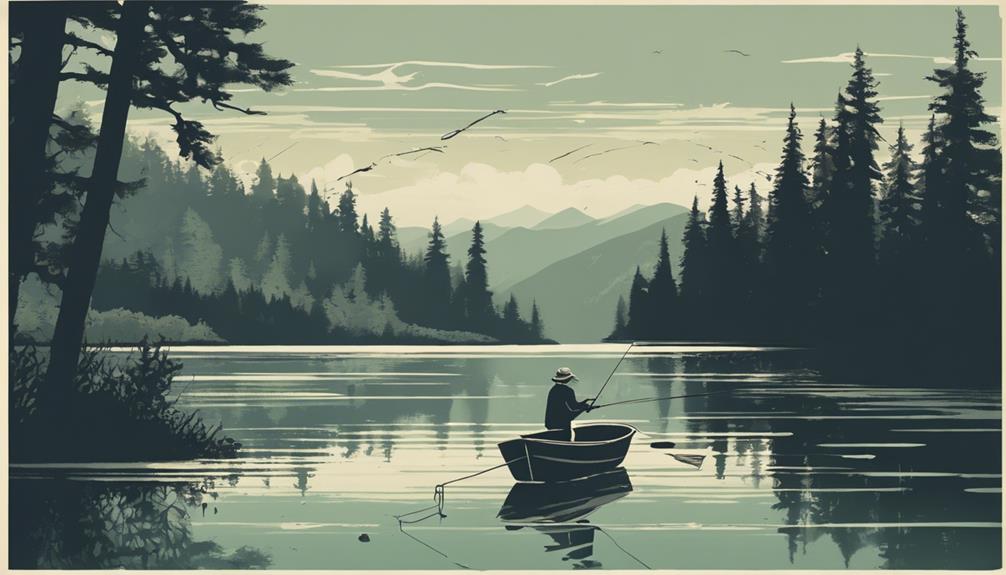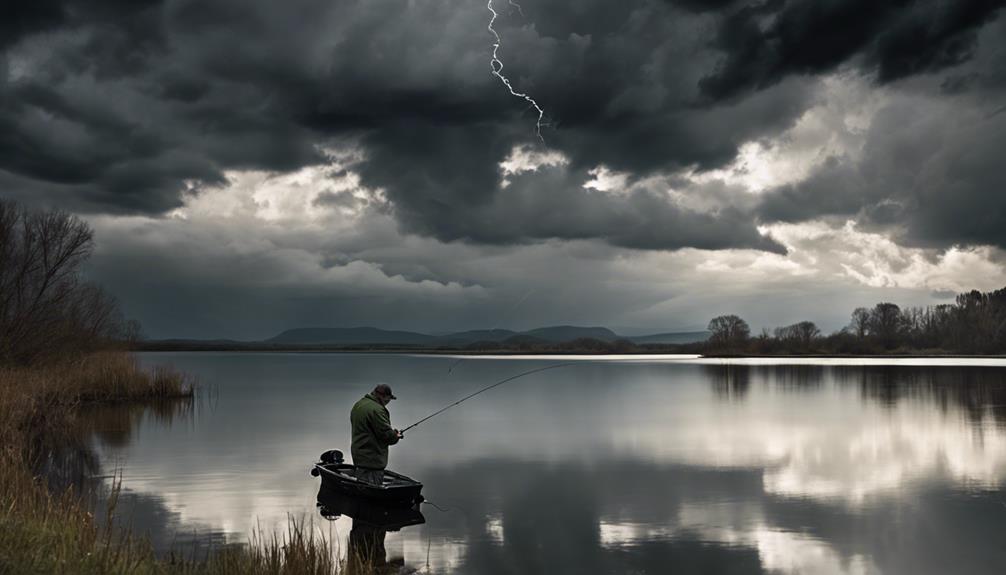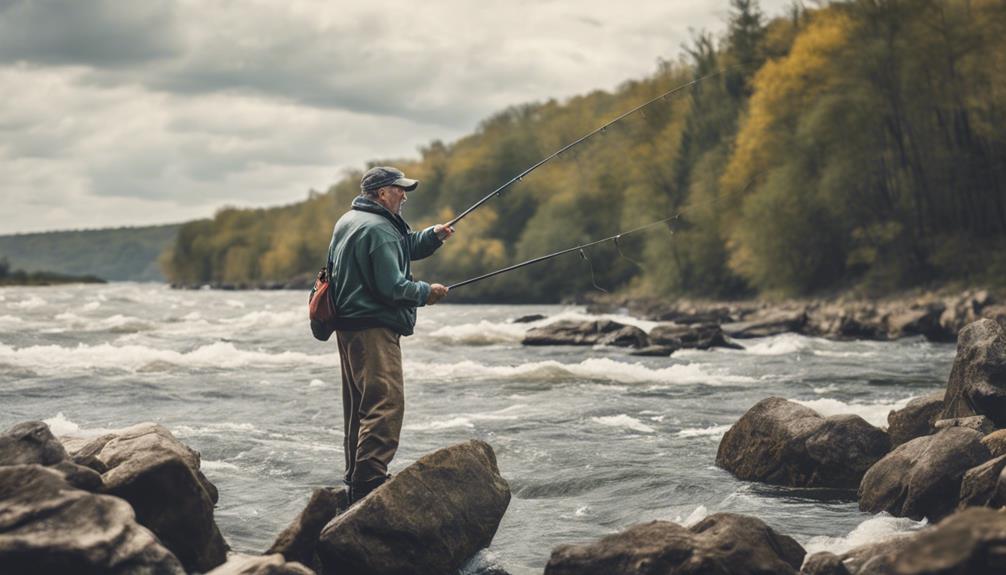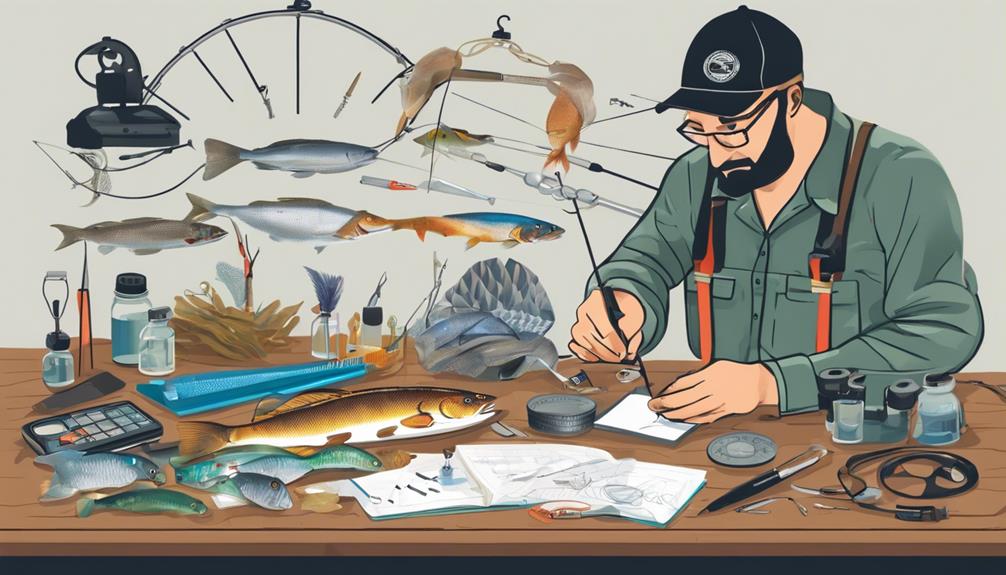In the vast waters of history, competitive angling has been a river flowing with the currents of change and tradition, shaped by various forces along its course.
From the humble beginnings of early contests to the modern-day tournaments that draw anglers from around the globe, the evolution of competitive angling holds tales of perseverance, innovation, and skill.
But what exactly are the key elements that have molded this beloved sport into what it is today? Let's explore the currents that have steered the history of competitive angling and discover the depths of its journey.
Early Origins of Competitive Angling
Competitive angling has humble beginnings rooted in the ancient practice of fishing for sustenance and sport. Fishing has held a significant historical significance in various cultures worldwide, with angling often being portrayed as a symbol of patience, skill, and harmony with nature. In many societies, fishing wasn't only a means of acquiring food but also a way to establish social hierarchy and showcase one's prowess.
Cultural traditions played a vital role in shaping early competitive angling practices. For example, in medieval England, fishing contests were held to demonstrate skill and strength, with participants using rudimentary equipment compared to modern standards. These events weren't only about the catch but also about camaraderie and community bonding. Moreover, in Japan, fly fishing has deep cultural roots, with traditional methods and techniques still being practiced in modern fly fishing tournaments.
Societal influences and economic implications also impacted the development of competitive angling. As angling gained popularity, especially among the nobility in Europe, it led to the creation of formalized rules and regulations for fishing competitions. These events attracted participants and spectators, contributing to local economies through increased tourism and the sale of fishing equipment. The economic potential of angling tournaments further solidified their place in society, paving the way for the organized competitions we see today.
Evolution of Angling Tournaments
Amidst the historical backdrop of angling's cultural significance and economic impact, the evolution of angling tournaments has seen a transformation from informal gatherings to structured and competitive events. Angling tournaments have evolved significantly over time, reflecting changes in society's views on fishing and competition.
Evolution of Angling Tournaments:
- Historical Significance and Tournament Formats: Angling tournaments have a rich historical significance, with early competitions often taking the form of friendly gatherings where anglers would compare their catches. As the sport gained popularity, these informal events evolved into organized tournaments with specific rules, scoring systems, and prizes. Different tournament formats emerged, including catch-and-release competitions, big fish contests, and multi-species tournaments.
- Cultural Impact and Competitive Spirit: Angling tournaments have had a profound cultural impact by bringing together individuals from diverse backgrounds who share a common passion for fishing. These events foster a sense of camaraderie and sportsmanship among participants while also fueling the competitive spirit inherent in angling. The thrill of competition drives anglers to continuously improve their skills, leading to innovation in fishing techniques and equipment.
- Professionalization and Global Reach: In recent years, angling tournaments have become increasingly professionalized, with top anglers competing for substantial cash prizes and sponsorships. These events now attract participants from around the world, showcasing the universal appeal of competitive angling and its ability to transcend cultural boundaries.
Pioneers in Competitive Fishing
At the forefront of the competitive fishing scene stand the pioneers who laid the foundation for modern angling tournaments. Angling legends like Ernest Hemingway, who popularized big-game fishing in the 1930s, and Ray Scott, the founder of B.A.S.S. in the 1960s, are renowned for their contributions to the sport. These visionaries not only elevated fishing to a competitive level but also introduced innovations that are still used today.
Competitive strategies and techniques developed by these pioneers have become fundamental in angling tournaments. Hemingway's focus on endurance and skill in battling large fish influenced the way anglers approached competitions. Scott's emphasis on conservation and catch-and-release practices transformed the sport, ensuring its sustainability for future generations. These early influencers also pioneered the use of specialized gear and boats tailored for competitive fishing, revolutionizing the way anglers approached tournaments.
The dedication and passion of these pioneers continue to inspire anglers worldwide. By pushing the boundaries of what was thought possible in competitive angling, they paved the way for the sport's growth and evolution. Their legacy lives on in the strategies, techniques, and values that define modern angling tournaments, making them an integral part of competitive fishing culture.
Impact of Technological Advancements
The evolution of competitive angling has been significantly influenced by the impact of technological advancements on fishing strategies and equipment. With the introduction of new tools and devices, anglers have been able to enhance their skills and improve their chances of success on the water.
Here's how technology has shaped competitive angling:
- Fishing Gear: Technological advancements have led to the development of specialized fishing gear such as high-performance rods, reels, lines, and baits. These innovations have increased the efficiency and effectiveness of anglers, allowing them to target specific species more accurately and with greater success.
- Electronic Devices: The integration of electronic devices like fish finders, GPS systems, and underwater cameras has revolutionized the way anglers locate fish and navigate waters. These tools provide valuable information about fish behavior, underwater structures, and optimal fishing spots, giving anglers a competitive edge in tournaments and competitions.
- Innovative Equipment: Advancements in materials and design have resulted in the creation of lightweight yet durable fishing equipment. From carbon fiber rods to corrosion-resistant reels, modern anglers have access to gear that offers improved performance and longevity, enabling them to fish more comfortably and effectively for extended periods.
Growth of Competitive Angling Clubs
As competitive angling continues to gain popularity, the growth of angling clubs across regions is becoming increasingly prominent. Angling clubs offer a platform for individuals passionate about fishing to come together, fostering club camaraderie and the exchange of tournament strategies. Being part of a club provides membership benefits such as access to exclusive fishing spots, equipment discounts, and educational workshops, enhancing the overall angling experience.
The competitive spirit within angling clubs drives members to improve their skills and participate in various fishing tournaments. These clubs often organize friendly competitions or larger-scale events where members can showcase their abilities and learn from one another. Engaging in these tournaments not only allows anglers to put their skills to the test but also creates a sense of community and shared enthusiasm for the sport.
Joining an angling club opens up opportunities to network with like-minded individuals, share fishing techniques, and receive mentorship from seasoned anglers. The sense of belonging to a community that shares a common passion for angling is invaluable. Additionally, being part of a club can provide access to valuable resources and knowledge that can help anglers improve their fishing techniques and overall success on the water.
Influence of Rules and Regulations
Implementing and enforcing clear rules and regulations is crucial in shaping the dynamics of competitive angling tournaments and ensuring fair play among participants. These guidelines not only provide structure but also uphold the integrity of the sport. Here's how rules and regulations influence competitive angling:
- Role of Ethics: Rules and regulations in competitive angling often emphasize the importance of ethical behavior. Anglers are expected to display sportsmanship, honesty, and respect towards both fellow competitors and the environment. These ethical standards help maintain a positive and inclusive atmosphere within the angling community.
- Cultural Traditions: Rules and regulations in angling competitions can also be influenced by cultural traditions. Certain practices or techniques may be allowed or prohibited based on cultural beliefs or historical significance. By respecting these traditions, anglers can preserve the heritage of the sport while adapting to modern competitive standards.
- Fair Competition: The enforcement of rules ensures fair competition by setting clear boundaries and guidelines for all participants. This levels the playing field and prevents any unfair advantages, promoting a sense of equality and sportsmanship among competitors. Adhering to these regulations is key to fostering a healthy and competitive angling environment.
Globalization of Competitive Fishing
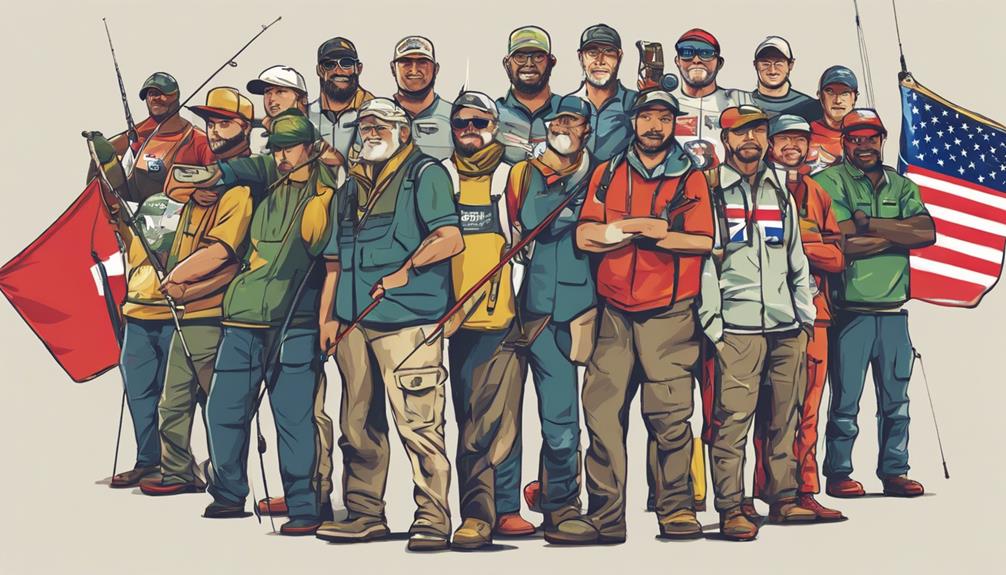
Shaping the history of competitive angling through the influence of rules and regulations has paved the way for the globalization of competitive fishing. As anglers from different parts of the world come together to compete, a rich cultural exchange takes place. This exchange goes beyond simply sharing fishing techniques; it involves the sharing of traditions, customs, and perspectives on nature and conservation. International competitions play a significant role in this globalization process, offering anglers the opportunity to showcase their skills on a global platform.
Through cultural exchange, anglers learn from one another, incorporating new methods and approaches into their own fishing practices. This cross-pollination of ideas leads to innovation and evolution within the sport, pushing anglers to constantly improve and adapt. International competitions further drive this process by creating a competitive environment where the best anglers from around the world can test their skills against one another.
Moreover, the globalization of competitive fishing has helped raise awareness about the importance of conservation and sustainable fishing practices. Anglers participating in international competitions often become ambassadors for environmental stewardship, promoting the responsible use of natural resources. As competitive fishing continues to expand its reach across the globe, the potential for positive change in angling communities worldwide grows.
Future Trends in Angling Competitions
Exploring innovative approaches to enhance angling competitions is crucial for shaping the future landscape of the sport. As angling evolves, considering sustainability initiatives and encouraging greater participation from women are key factors driving the future trends in angling competitions.
Future Trends in Angling Competitions:
- Sustainability Initiatives: Integrating sustainability practices into angling competitions can help preserve aquatic ecosystems. Organizers can implement catch-and-release policies, promote responsible fishing practices, and educate participants on conservation efforts. By prioritizing sustainability, angling competitions can contribute to the long-term health of marine life and habitats.
- Empowering Women in Angling: Increasing the involvement of women in angling competitions is essential for promoting diversity and inclusivity within the sport. Encouraging female anglers through specialized events, mentorship programs, and equal prize opportunities can help bridge the gender gap in competitive fishing. Embracing women in angling not only enriches the sport but also fosters a more welcoming and equitable community.
- Technological Advancements: Embracing technological innovations can revolutionize angling competitions. From advanced fishing gear to real-time scoring systems, incorporating technology can enhance the overall experience for participants and spectators alike. By staying at the forefront of technological trends, angling competitions can attract a broader audience and elevate the level of competition.
Frequently Asked Questions
How Do Competitive Anglers Prepare Mentally and Physically for Tournaments?
To get ready for tournaments, competitive anglers focus on mental preparation and physical training.
Mentally, you visualize success, calm your nerves, and stay focused on the game plan.
Physically, you work out to build strength, stamina, and flexibility.
By combining mental readiness with physical conditioning, you set yourself up for peak performance on tournament day.
What Role Do Sponsorships Play in the World of Competitive Angling?
In the world of competitive angling, sponsorships can greatly impact an angler's career. Benefits include financial support, gear, and exposure.
However, challenges may arise such as meeting sponsor expectations and maintaining authenticity. Ethical considerations and regulations play a crucial role in ensuring fair practices within sponsorships.
As a competitive angler, navigating sponsor relationships requires balance between reaping the benefits and upholding integrity in the sport.
How Do Environmental Factors, Such as Climate Change, Impact Competitive Fishing Events?
When you think about competitive fishing events, it's crucial to consider how environmental factors like climate change are affecting them. Pollution and changing ecosystems have a significant impact on these events.
As the environment shifts, fish populations move, making it harder to predict where the best catches will be. This can challenge anglers to adapt quickly to new conditions and strategies to remain competitive in the sport.
Are There Any Notable Controversies or Scandals That Have Affected the Competitive Angling Industry?
Controversial practices and cheating scandals have significantly impacted the competitive angling industry. These controversies have led to distrust among participants and spectators alike.
It's vital for the sport's integrity that organizations take swift action to address such issues and ensure fair play. Stay informed and hold those involved accountable to maintain the competitive spirit of angling events.
How Do Anglers Balance the Competitive Aspect of Fishing With Conservation Efforts to Protect Fish Populations?
When you're out there angling, balancing competition and conservation is crucial. You have to navigate tournament pressure while upholding strong conservation ethics.
It's about managing fish populations responsibly while still striving for competitive balance. By being mindful of the impact your actions have on the environment and the fish populations, you can compete in a way that respects nature and ensures the sustainability of the sport for future generations.
Conclusion
As you reflect on the history of competitive angling, you can see how early origins, pioneering individuals, technological advancements, and global expansion have all played a role in shaping this beloved sport.
With the evolution of angling tournaments, the growth of clubs, and the influence of rules and regulations, competitive fishing has become a worldwide phenomenon.
Looking ahead, the future of angling competitions holds exciting possibilities for anglers of all levels to continue pushing boundaries and making waves in the sport.
